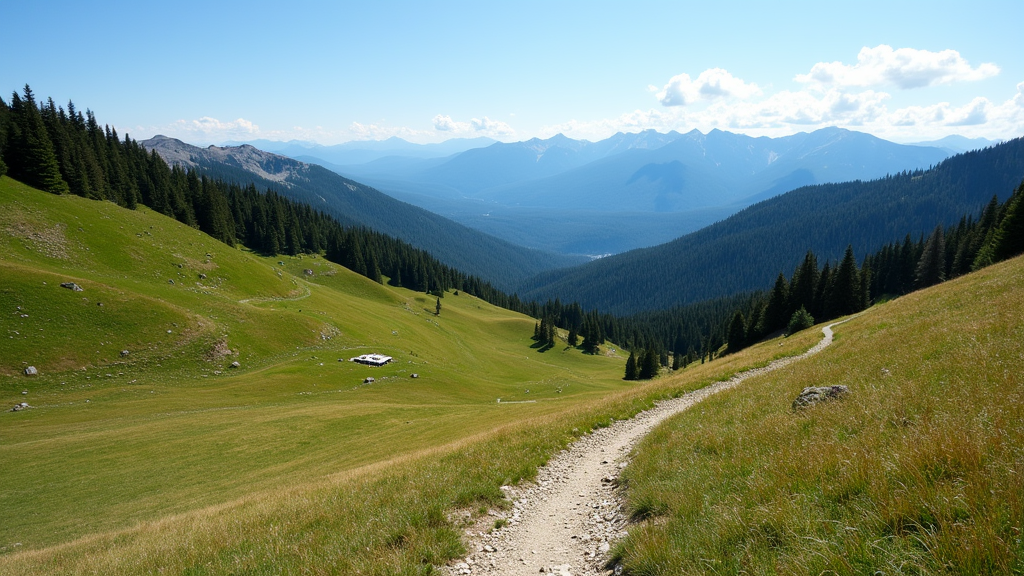Exploring national parks with kids can be really fun and surprisingly memorable. The wide open spaces, unique wildlife, and towering trees have a way of sparking curiosity in kids of all ages. Still, the idea of planning a national park trip with kids can feel a bit daunting at first, especially when you’re trying to balance safety with creating a sense of adventure. Here, I’m sharing what I’ve learned along the way; useful tips, cool ideas, and hiccups to watch for—all to make these trips smooth and enjoyable for the whole family.

Why Explore National Parks With Kids?
National parks are basically giant natural playgrounds that offer a break from screens, packed schedules, and city noise. Hiking a real trail or peeking into a tide pool gives kids a hands-on taste of science, geography, and history. The National Park Service reports that family friendly programs at parks are way more popular now, with families often choosing parks as a way to both relax and learn together.
Most parks have Junior Ranger activities, easy trails, and plenty of picnic areas, making them pretty family friendly. Plus, entry fees are usually affordable (and sometimes free with national programs, so it’s worth checking in advance).
For me, these trips offer less pressure than, say, a busy theme park. The pace is slow, there’s fresh air, and my kids often talk for weeks about the animals and rocks they spotted. The change in scenery really helps recharge everyone. Besides, being surrounded by big trees and mountain air gives a boost to everyone’s mood, making it easier to connect as a family.
Getting Ready: What To Pack and Plan
Before heading out on a national park trip with kids, a little prep pays off. National parks can be remote, so planning ahead helps you avoid surprises and meltdowns (both kid and adult varieties). Here are some recommendations for what to bring and how to prepare for a successful outing:
- Water and Snacks: Even short trails can take longer than you expect with kids. Lots of water and trail snacks help keep everyone happy and energized.
- Comfortable Clothing and Layers: Weather can switch quickly, especially in mountain parks. Dress in layers, and bring rain gear just in case. A lightweight jacket is handy even for warm days that can turn cool quickly.
- Basic First Aid Kit: I never regret tossing in a few bandages, bug spray, and sunscreen. Trips away from park centers mean you need to be self-reliant.
- Navigation Tools: Some parks have little to no cell service, so pick up a park map at the visitor center. Kids love helping to follow along with the trail map.
- Kidfriendly Backpacks: Letting kids carry their own small pack gives them some independence and helps with those “I can do it myself” moments.
- Camera or Binoculars: Give a boost to your child’s curiosity by handing them a pair of binoculars or a simple camera to spot interesting views or wildlife along the trail.
When packing, simplicity is key. Bring what you’ll need for the hike or activity, but avoid overloading. A bulky daypack can zap your energy during a long day outdoors. Try to encourage kids to help pick out their own essentials for their backpacks. This step gets them excited about the adventure and gives them a sense of ownership.
Finding the Perfect National Park for Your Family
Every park has its own vibe and features, so I always consider what my kids enjoy most before picking one. Is it all about animals, climbing rocks, learning about volcanoes, or swimming in lakes? Some parks are better for families with small kids, while others suit teens and adventurous tweens.
- Yosemite National Park (California): Easily accessible family trails, towering waterfalls, and plenty of ranger talks make it popular for families. There are also kidfriendly shuttle buses to reach main areas, saving lots of little legs from long walks.
- Grand Teton National Park (Wyoming): Lakes for swimming and paddling, wildlife watching, and accessible campgrounds. The views around Jenny Lake are especially impressive and easy to reach.
- Acadia National Park (Maine): Short hikes, beach exploring, and brilliant fall colors—great for kids who like variety. The carriage roads are perfect for family biking, too.
- Great Smoky Mountains National Park (Tennessee/North Carolina): Free entry, gentle trails, and lots of history and wildlife viewing. Spring and autumn bring out the best wildflowers and fall leaves.
- Everglades National Park (Florida): For kids fascinated by alligators and wetlands, the boat rides are a hit. The Anhinga Trail is strollerfriendly and gets you close to wildlife safely.
Many parks have education centers and interactive displays, so it’s worth adding a stop at the visitor center to your itinerary. You’ll usually find trail maps, activity suggestions, and hands-on things for kids to explore. Some visitor centers even have discovery rooms where little ones can play, touch animal skins, or do simple crafts.
Tips For A Fun and Smooth Park Adventure With Kids
Family hiking in a national park is a lot different than hiking solo; expect a slower pace and lots of stops for discoveries. Here are some ways I make the day run smoothly:
- Set Reasonable Expectations: Aim for short, well-marked trails with cool destinations like water features, rock formations, or shady picnic spots.
- Let Kids Take the Lead: Kids feel more invested and excited if they get to help choose the trail or activities. Let them read signs or decide where to pause for snacks.
- Build in Time For Exploring: Stop to look at bugs, skip stones in a creek, or build a stack of rocks. These unplanned moments are usually the most memorable.
- Do the Junior Ranger Program: Nearly every park offers a badge or certificate for kids who complete simple activities. It’s a fun motivator and doubles as a cool souvenir.
- Keep Spirits Up: Energy dips happen. A spontaneous snack break or silly story is great for keeping spirits high if anyone starts to drag their feet. Bringing along a favorite treat can also turn a rough patch into a happy memory.
Some parks even have guided walks or story times for families. It’s usually mentioned on the park’s website or at the entrance, so those are worth asking about. Checking the activity board can lead to stumbling upon special events scheduled just for kids.
Common Challenges (And How to Handle Them)
Exploring a national park with kids isn’t always a walk in the park; there are honest-to-goodness hurdles. I’ve learned to expect:
- Tired Legs: Choose shorter loops or “out and back” routes so you can turn around easily. A few treats or small rewards help motivate kids to finish strong.
- Unexpected Weather: Weather can turn wild in high elevations or near coasts. Pack hats, mittens, and rain jackets, even if it looks sunny when you leave.
- Meltdowns: If one kid isn’t having it, take a breather, offer water, or play a quick game like “I Spy” to distract and reset the mood.
- Boredom: Give kids a “job” like phototaking, looking for certain animals, or keeping track of trail markers for a little purpose and adventure.
- Wildlife Safety: Teach kids to observe animals from a distance, not to approach or feed them, and always stay on trails.
Tired Legs
Even kids who run nonstop at home might suddenly ask to be carried on the trail. I keep hikes beginnerfriendly and scope out interesting midway markers. Knowing there’s a cool lookout, stream crossing, or snack stop up ahead goes a long way.
Weather Swings
I got caught out by a quick thunderstorm once, which taught me to always keep a packable rain poncho handy. Layering is your best friend in the wilderness, so don’t be caught cold or wet because you didn’t pack extras.
Wildlife Safety
National parks are living, breathing habitats. I give my kids a gentle reminder about not petting chipmunks or picking wildflowers. Wildlife viewing is more fun when everyone’s safe. It’s helpful to read up on local animals and any safety guidance before heading out.
Fun Ways To Spark Kids’ Curiosity in Nature
Curiosity is contagious. If I’m excited to spot an eagle or find a new kind of mushroom, my kids usually are too. Here are a few ideas I’ve found super useful for keeping everyone interested:
- Bring a Magnifying Glass or Binoculars: Something as small as an acorn or as huge as a distant elk grabs instant attention when you can observe it “up close.”
- Field Guides and Checklists: Check out a simple field guide for local plants or animals at the visitor center or bring printed scavenger hunts. Sometimes parks have their own field checklists for birds, flowers, or animal signs.
- Nature Journals: Pack a notebook and let your kids draw what they see, tape in leaves, or write down new facts. These journals are super fun to look back on later—and they make great keepsakes.
- Simple Science Experiments: Try floating leaves, comparing different rocks, or making a quick bark rubbing. Hands-on fun beats a lecture every time.
- Stories and Legends: Research a local myth or animal legend and tell it around your lunch spot. Kids love a good story, and it brings the park to life in a whole new way.
My kids usually remember details about the trip long after; like the time they found an unusual feather or heard frogs croaking near a pond. These discoveries stay with them and often prompt new questions weeks later.
Useful Questions About Exploring National Parks With Kids
Here are some questions that families often ask when planning national park adventures with children. These should give a bit more insight and help you feel prepared:
Question: What’s the best national park for a first visit with small children?
Answer: Parks with visitor centers, paved paths, and nearby campgrounds like Shenandoah, Acadia, or Yellowstone are pretty userfriendly for families new to outdoor adventures. Flat, shaded trails and lots of spots for resting help a ton.
Question: Can you bring a stroller or carrier on park trails?
Answer: Many parks have partial paved paths and boardwalks that are strollerfriendly. For rougher trails, a child carrier backpack works great. It pays to ask at the visitor center about which routes are suitable. Sometimes parks have detailed trail brochures that point out best options for wheels.
Question: Are there any fees or passes worth knowing about?
Answer: Most parks have daily admission, but the America the Beautiful Pass can be a money saver if you plan to visit more than one park in a year. Some parks offer free entry days throughout the year, especially around major holidays. Kids fourth grade and up can even get a free annual pass through the “Every Kid Outdoors” program.
Final Thoughts on Making National Parks Family Memories
Exploring national parks with kids isn’t about ticking off destinations as quickly as possible. It’s really about soaking in the views, following curiosity, and sharing a sense of wonder. Thoughtful planning and open ended adventure go a long way in shaping family traditions and outdoor confidence. Each trip is a chance for kids and adults to learn together, get inspired, and build stories you’ll talk about for years. The biggest joys come from seeing the world fresh through your children’s eyes.
All you need is a dash of preparation, a willingness to go with the flow, and the chance to trade “are we there yet?” for “let’s see what’s around the next bend.” National parks offer some of the richest family moments you can stumble upon, with each visit writing a new chapter in your adventure book.
